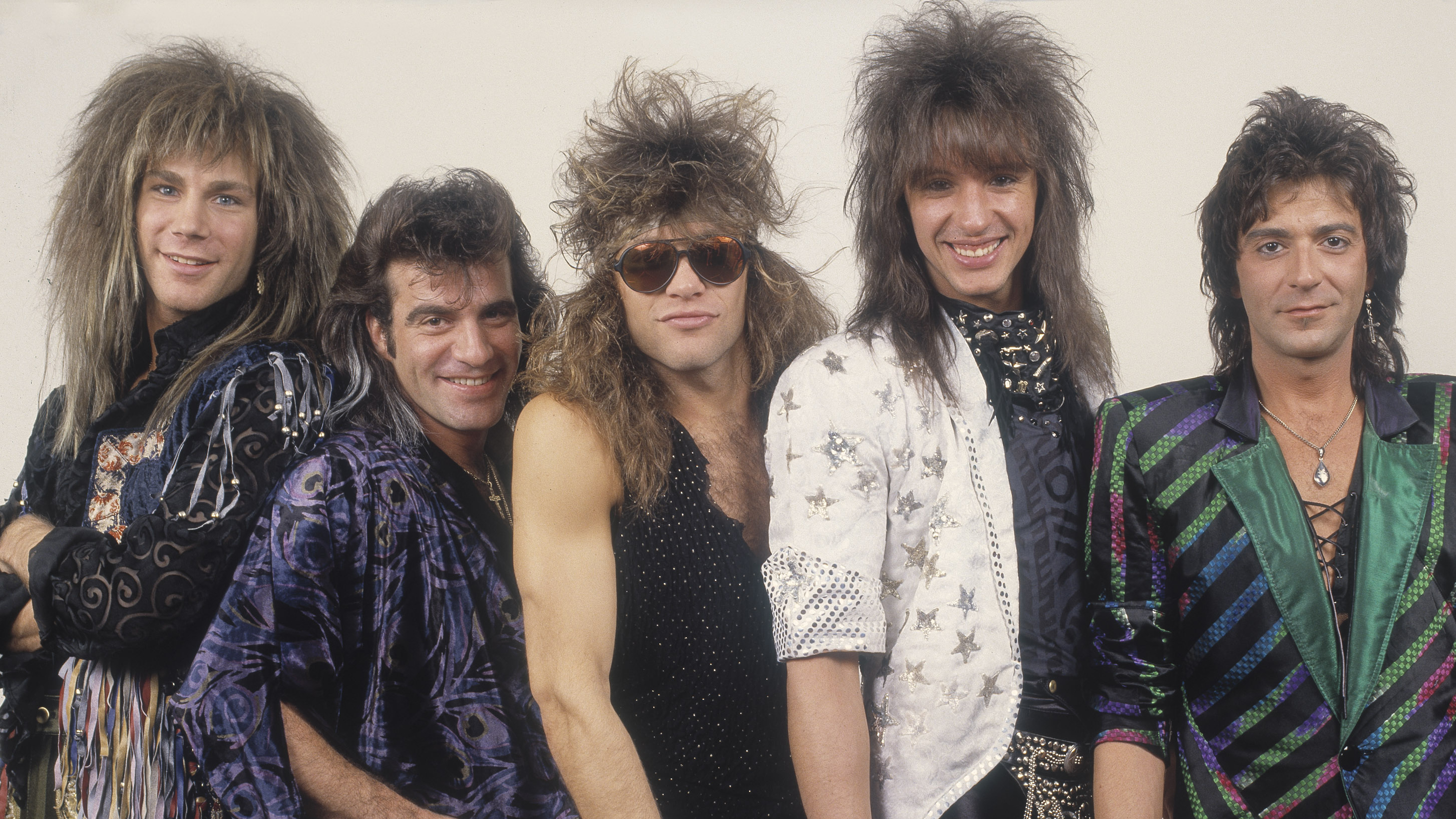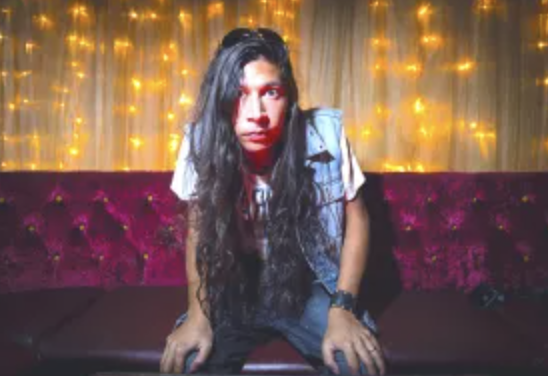“When I brought up the talk box, everybody in the band started laughing at me. But when it actually worked, it became an integral part of that hit song”: How Bon Jovi created their signature rock anthem – with a 'hit doctor' and a 'goofy' guitar effect
“When I was a teenager, Frampton Comes Alive was such a huge record"

Livin’ On A Prayer is Bon Jovi’s most famous song and one of the great rock anthems of all time.
It was also the band’s second consecutive No.1 hit in the US in the late '80s, after You Give Love A Bad Name.
And with both of these songs, a key role was played by a writer from outside of the band – Desmond Child, a man known as ‘The Hit Doctor’.
By the time Bon Jovi made their third album Slippery When Wet, a solid songwriting partnership had been established by singer Jon Bon Jovi and guitarist Richie Sambora.
But after the previous album, 7800° Fahrenheit, had bombed, it was suggested that Jon and Richie might require a little help in honing their songs for mainstream radio.
“To some extent it was our choice,” Jon Bon Jovi told Classic Rock writer Malcolm Dome. “Our A&R guy [Derek Shulman] came up with Desmond’s name.”
Florida-born Child had not had any real success as a performer with his vocal group Desmond Child & Rouge, in which he starred alongside female singers Myriam Valle, Diana Grasselli and Maria Vidal – the latter a one-hit wonder with her 1984 solo track Body Rock.
Want all the hottest music and gear news, reviews, deals, features and more, direct to your inbox? Sign up here.
But in 1979, Child had his first taste of the big time when he co-wrote the Kiss song I Was Made For Lovin’ You with the band’s frontman Paul Stanley and producer Vini Poncia. This disco-influenced number reached No.11 on the Billboard Hot 100.
Child then wrote three songs for Cher in 1982, before working again with Kiss on the 1984 album Animalize and the 1985 album Asylum.
For Slippery When Wet he collaborated with Jon Bon Jovi and guitarist Richie Sambora on You Give Love A Bad Name, Livin’ On A Prayer and two lesser tracks, Without Love and I’d Die For You.
As Jon Bon Jovi said of Child: “What’s wrong with collaborating with people like him, who can help to give us the extra 10 per cent out of a song?”
He added: “This is the way I see it: you don’t think that George Martin had an input into what Lennon and McCartney wrote?”
Livin’ On A Prayer tells the story of Tommy and Gina, a working class couple who, despite facing financial hardships and despair in their professional lives, are able to support each other through thick and thin.
The lyrics effectively boil down to their love for each other being stronger than anything else. It’s an ode to emotional resilience and romantic solidarity in the face of economic struggle – which is what made the song so brilliantly relatable.
“I wanted to tell a story about people I knew,” Jon Bon Jovi said: “Tommy and Gina aren’t two specific people – they represent a lifestyle.”
He went on to acknowledge a number of songwriters whose work had influenced him – Elton John, Paul Simon, Elvis Costello and, most surprisingly, Tom Waits.
As for Richie Sambora, one of the key elements in Livin’ On A Prayer – his talk box guitar riff – was influenced by one of the great rock hits of the ’70s, Peter Frampton’s Show Me The Way.
Livin’ On A Prayer has practically become a definition of this guitar effect – which famously requires the player to shape the ‘vowels’ of their instrument via a plastic tube typically placed adjacent to a regular microphone.
It isn’t known exactly which talk box guitarist Richie Sambora used on the recording – though it will most likely have been the Heil unit first developed by Bob Heil in 1973.
In more recent years, Sambora, who left Bon Jovi in 2013, has been using the Framptone talk box made by the company owned by Frampton himself.
“Peter Frampton lent me one of his because I blew [my old] one up,” Sambora told Vintage Guitar magazine in 2000. “He’s building his own effects now and he gladly obliged. So I’ve been playing live with his new stuff and I’m liking it a lot.”
In the same interview, Sambora was asked about which players influenced him into getting a talkbox.
“When I was a teenager, Frampton Comes Alive was such a huge record,” he said. “I liked that it was a live album and I loved to see bands live. Joe Walsh also used talk box amazingly. Those were the main guys.”
Livin’ On A Prayer was recorded at Little Mountain Sound Studios in Vancouver with producer Bruce Fairbairn and his engineer Bob Rock.
Jon Bon Jovi was not a fan of the demo version of the song – which was later released as a hidden track on 2004 B-sides and rarities box set 100,000,000 Bon Jovi Fans Can’t Be Wrong.
Luckily, after reworking the bass line and adding in the talk box effect, Sambora managed to convince the singer that the track was worth including on Slippery When Wet.
“It’s an interesting instrument,” Sambora said of the talk box. “I’ve tried to use it a lot more because I’ve always thought it was cool. And it has become kind of a signature thing for me since Livin’ On A Prayer was such a hit. At that point, when I brought the talk box out, I don’t think it had been on the radio for 10 or 15 years, except for classic rock radio.”
Sambora even went as far admitting he was initially ridiculed by his bandmates for trying to introduce a guitar effect that sounded as strange as it looked.
“When I brought it up to everybody in the band, they all started laughing at me like I was a goofy bastard,” he explained. “But when it actually worked, it became such an integral part of that hit song.”
The main guitar riff is built off the E Minor pentatonic scale, based around the fifth and seventh frets of the A and low E-string.
What gives the song a natural minor flavour, however, is the introduction of a C power chord in the verses, pre-choruses and choruses – which is the minor sixth interval of the E parent scale.
The guitar solo in centred around the E minor positions found at the 5th and 12th frets and ends with an ascending chromatic run that builds into a big bend on 17th fret of the high E-string.
After Sambora’s electrifying solo, the last chorus modulates up one and a half tones from E to G. Key changes like this are used to create intensity and drama as part of a final climax.
There isn’t a great deal of information on the exact guitar gear used on the final recording, but it was most likely the guitarist’s signature Kramer – like the one he can be seen holding in the music video – going into either a Marshall or Marshall-style amp.
Sambora stated: “When you look back at albums like Slippery When Wet or [1988 follow-up] New Jersey, I used two guitars and two tones, besides an acoustic.”
In 2010, Sambora was asked by MusicRadar if his connection to the talk box ever began to feel like a burden.
“No, no, no,” was his answer. “It doesn’t matter to me. People get excited about it, man.
“If you ask me, ‘Am I gonna be sitting in my room and playing Livin’ On A Prayer for the fucking twenty-fifth thousandth time?’ Of course not.
“But listen – rock ‘n’ roll is a contact sport. The rush is to take it in front of 70,000 people and have that happen – that’s what makes it great. It’s like having sex with your clothes on, man! It’s the best thing you can possibly do.
“I never mind playing those songs for the people. That’s the fun of it. And you know what? They’re really good songs.”
Amit has been writing for titles like Total Guitar, MusicRadar and Guitar World for over a decade and counts Richie Kotzen, Guthrie Govan and Jeff Beck among his primary influences. He's interviewed everyone from Ozzy Osbourne and Lemmy to Slash and Jimmy Page, and once even traded solos with a member of Slayer on a track released internationally. As a session guitarist, he's played alongside members of Judas Priest and Uriah Heep in London ensemble Metalworks, as well as handling lead guitars for legends like Glen Matlock (Sex Pistols, The Faces) and Stu Hamm (Steve Vai, Joe Satriani, G3).
You must confirm your public display name before commenting
Please logout and then login again, you will then be prompted to enter your display name.



